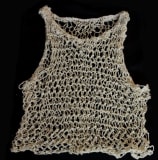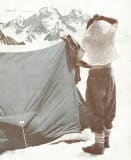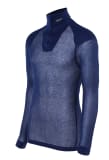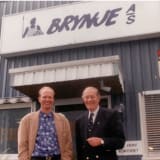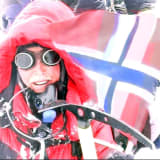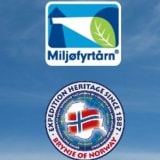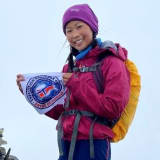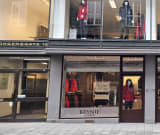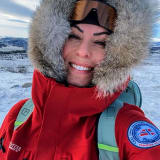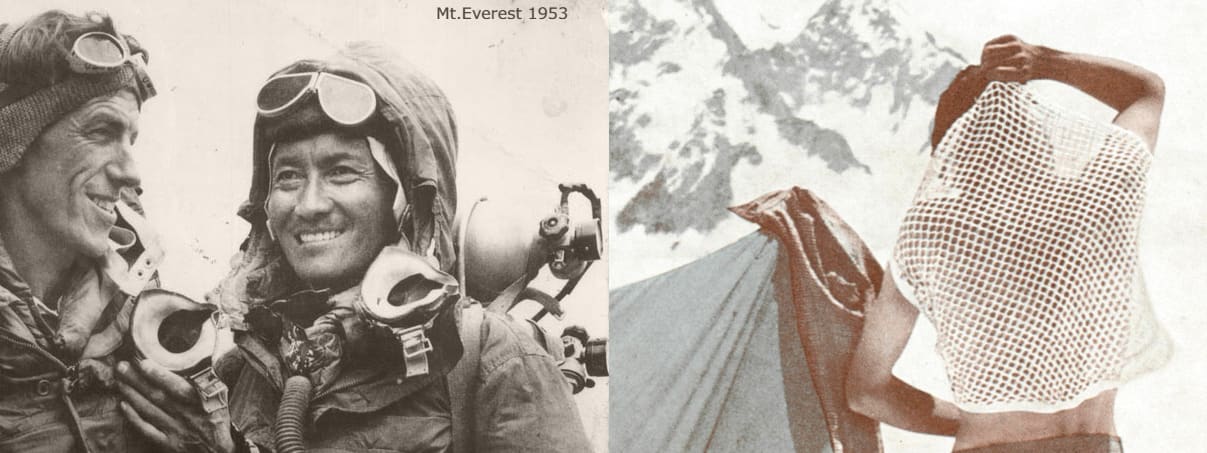
The story of Brynje
Brynje of Norway is a family-owned clothing company from Larvik city in Norway. Since 1887 we have kept adventurers dry, warm and safe. When Tenzing and Hillary climbed Everest in 1953, they wore Brynje mesh next to the skin.
-
1887
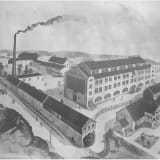
1887: Jacob Jacobsen settles in the town of Larvik, Norway
Brynje’s founder, Jacob Jacobsen, was born into one of Denmark’s principal textile families as the youngest of 20 children. In 1887, Jacobsen moved to the Norwegian town of Larvik, where he started a family with his Norwegian wife. Here, he established J. Jacobsen’s Knitwear & Confection Clothing, which quickly grew successful due to his extensive knowledge of the textile industry and his use of local Norwegian wool. Today, more than 130 years later, the Jacobsen family is still at the helm of the company.
-
1921: Henrik Brun invented the first thermal string vest in history
Henrik Natvig Brun was born in Oslo in 1897 and received a military education. In 1921, he took over running the family farm Lunda in Uvdal. Alongside the farm work, Henrik preoccupied himself with exploring ways to better equip the Norwegian Army. He was especially interested in the idea of improving undergarments, which led him to develop a netting vest that resembles the historic Viking armour known as Brynje. Brun’s novel idea was to construct an insulating and ventilating garment that could trap warm air between the outer clothes and the skin. At first, he experimented with making vests from fishing nets but later switched to using cotton. Henrik Brun is said to have knitted over a thousand Brynje string vests himself.
-
1928
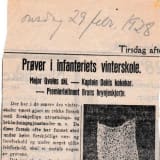
1928: Norwegian newspaper, Aftenposten, writes about a test of Brun's string vest
On Wednesday 29 February 1928, the Norwegian newspaper Aftenposten wrote about an undergarment that was designed to keep the Norwegian combat forces warm and battle-ready. This is the first written account of Brun’s string vest. As a first lieutenant, Brun had tested his garments at the Norwegian Infantry's winter school in 1927. The response was positive; the string vests had "certainly delivered salvation from many colds." Brun himself stated: “I wear it next to my skin night and day and it has become an irreplaceable undergarment to me. In addition, it must be said that it’s hygienic properties are excellent.”
-
1930-1932
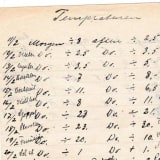
1930-1932: Brun develops winter equipment for His Majesty the King’s Guard
For three winters, Brun was engaged by the Norwegian King’s Guard to develop cold season equipment "according to his own principles and ideas". Brun sums up an 800 km long-distance march in bad winter weather and miserable conditions, the following way: “The guardsmen were healthy and strong, far from exhausted after the march. This is probably mostly due to good clothing, good equipment and the sledge being of reasonable weight and appropriate type.” The sledge was also made by Brun.
-
1936
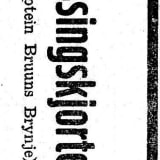
1936: Early versions of the Brynje thermal string vest are sold in Oslo
An advertisement in the capital’s newspaper dated March 14, 1936, shows that Mehren’s Gentlemen’s Outfitters at that time sold two types of Brynje string vests: “A heavy-duty coarse-weave vest for outdoor work and hiking, and a thinner-weave vest called ‘Salon-Brynje’, designed to be worn underneath shirts.” The latter was promoted as a good choice for everyday use in the city.
-
1940
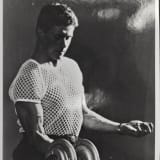
1940: The Norwegian Field Artillery Regiment test Brynje thermal string vests
For the first time, Brynje thermal string vests were tested by an entire field battalion. A letter addressed to Brun shows that a total of 600 vests were distributed to soldiers. The test resulted in words of praise: 1) “From random tests, which we have carried out periodically in order to accurately understand the views of the soldiers, the outcome has always been the same; that the ventilating and insulating properties of the vest fully correspond to the expectations created by the advertising." (Captain Egers, commander of the Staff Battalion) 2) “The soldiers kept warm even in the most severe conditions (- 30 degrees celsius). The reason for this was that the soldiers, in addition to their military clothing, had been given Brynje string vests. This was worn by all the soldiers and everyone seemed happy with it." (Captain Smith, commander of the 3rd Field Battery) 3) "The boys liked the Brynje string vest very much" (Captain Hellum, commander of the 4th Field Battery).
-
1942
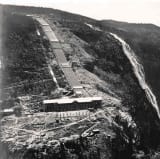
1942: The sabotage operation at the heavy water plant at Rjukan
Equipment lists which were distributed to Norwegian and British soldiers participating in the famous sabotage operation at Vemork, Rukan, specified the item "string vest". It is highly probable that this referred to Henrik Brun's Brynje string vest; which was at the time, worn by many soldiers in the Armed Forces.
-
1945 - 1953
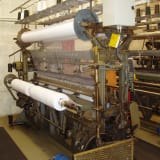
1945 - 1953: Norwegian Defense tender and more widespread production of the string vest
In the years following the second world war, the Norwegian Defence was looking for a manufacturer of the Brynje string vest, and at this point, the family business Jacobsen in Larvik became interested in producing "Brun’s Brynje". Brun himself lacked the proper industrial knitting machines as well as the funds to set up his own production. At the time when Brun and Jacobsen began discussing possibilities, Brun had already approached several factories without success. In the aftermath of the war, Brun had been convicted of treason for choices he made during the second world war, so the Norwegian Defence no longer wanted to conduct business with him. Jacobsen owned Raschel knitting machines, and through collaboration with both the Norwegian Army and with Brun, the Jacobsen family developed a prototype of the string vest, however, when the Armed Forces announced its first round of tender, 14 factories submitted bids. In public tenders, it is permitted to copy and make patents available to others, thus, many companies took advantage of this opportunity and in the end, it was not Jacobsen, but another manufacturer, who won the tender due to their lower production cost. Over the years, Brynje has experienced losing tenders many times - being the most affordable manufacturer is often not possible when also upholding a commitment to environmental protection, ethical principles and high-quality products.
-
1953
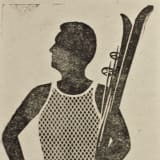
1953: Jacobsen buys the Brynje brand
The Jacobsen family business did not give up even though they had lost the tender. Instead, they looked elsewhere for opportunities to sell the string vest, and so the need for a brand name arose. In 1953, J. Jacobsen’s Knitwear & Confection Clothing bought the brand "Brynje" from Brun for 2000 NOK. At the same time, the company changed its name from "J. Jacobsen’s Knitwear & Confection Clothing" to "Brynje Knitwear Factory Ltd ". (In recent years, the name was again changed to "Brynje of Norway".) Brun was pleased to see a return on his work on the Brynje string vest. The payment he received was a decent sum of money by the standards of the day, considering that Norway was one of the poorest countries in Europe at the time. Jacobsen demonstrated faith in the string vest and Brun was given assurance that his invention would live on. Full credit for the invention of the thermal string vest belongs to Captain Henrik Brun alone - and Brynje owes an enormous debt of gratitude to him. It is true that Brun ended up on the wrong side during the war, but it is important to acknowledge that he was dedicated to defending Norway and concerned himself with improving the Army’s equipment before the war. The introduction of the string vest shifted the direction of Brynje Knitwear Factory Ltd from women's fashion & children's clothing to functional clothing for the military and outdoor enthusiasts. After the war, public interest in leisure and outdoor activities rose, which equated to a steep increase in production at Brynje. On one occasion, the factory produced a delivery with a volume of over 200,000 garments! Intermittently, trend cycles create a sudden popular demand for the string vest and Brynje has on occasion struggled to keep up.
-
1953: To the top of Mt. Everest with Hillary and Tenzing - international recognition of the thermal string vest
When the British Army Colonel John Hunt was put in charge of planning the famous Mount Everest expedition of 1953, he shocked the then conservative climbing world with completely new theories about weight, speed, clothing and comfort. The entire expedition team was equipped with Brynje string vests, and on May 29, 1953, Sir Edmund Hillary and Tenzing Norgay reached the top of the world's highest mountain. The two climbers wore Brynje's string vests next to the skin, making these the first thermal undergarments at 8848 m elevation, and supporting Hillary and Tenzing as they “knocked the bastard off”.
-
1959

1959: Ingemar Johansson is sponsored by Brynje
Brynje sponsored world heavyweight boxing champion, Ingemar Johansson, with string vests and a sum of 1500 NOK, making him one of the first sporting stars to be sponsored by an underwear company.
-
1960

1960: Court case concerning EKT branded string vests
Edvin Thorson Jr., the owner of the company EKT’, was one of many people to start up production of the string vests soon after the war. Even though EKT string vests were manufactured by use of Brynje knitting machines, they were still considered a competitor. Gradually, the EKT and Brynje string vests grew to have equal market shares in Norway. Although Thorson had been quick to start his string vest production, it was Brynje who had co-developed the string vest with the Norwegian Defence and It was also Brynje who made the first machine-produced string vest and who bought and re-registered the Brynje brand name. Brynje went to court against EKT to secure the rights to the brand name and won the case. The end result was that Brynje bought back the machines from Thorson when he halted his string vest production. Brynje also acquired the right to continue production under the brand name EKT to its regular customers and for sales to Langedrag Nature Park in the Nore and Uvdal district. In later years, there have been several other court cases relating to the Brynje brand name.
-
1976: Super Thermo Mesh - the launch of a new base layer
Synthetic yarn came onto the market and this led Brynje to develop what was to become one of its signature base layers - Super Thermo Mesh made of Polypropylene. The new material revolutionised Brynje’s thermal base layers and offered unique advantages in the form of ultra-low weight, highly effective moisture transport, lightning-fast drying and superior insulation.
-
1984: Norwegian Military School report on the properties of Polypropylene mesh undergarments
The mesh undergarments are extremely lightweight, absorb minimal moisture and “is the most heat-insulating fibre on the market. It Insulates even better than wool when compared on an equal volume basis. In achieving this, the construction of the garment plays a major role.”
-
1988: SINTEF names Super Thermo Mesh
Sintef, one of Europe’s largest research organisations, states that Super Thermo Mesh made of Polycolon®, a type of Polypropylene yarn, is the fastest drying and best insulating undergarment on the market.
-
1933
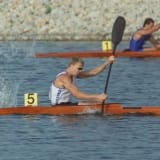
1993: Knut Holmann
Knut Holmann took gold (K1-1000 meters) and silver (K1-10 000 meters) at the World Championships in Copenhagen in 1993 with a short-sleeved white Super Thermo mesh jersey under the singlet.
-
1993: Brynje moves to Øya 41, Larvik
Brynje demolished its grand old centre-of-town factory and relocated to new premises at the outskirts of Larvik.
-
1994
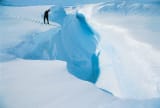
1994: The audacious Unarmed to the South Pole expedition
Expeditionists Lars Ebbesen, Odd Harald Hauge and Cato Zahl Pedersen all wore Brynje’s Super Thermo Mesh as they made their way to the South Pole. Cato Zahl Pedersen became the first person with a physical handicap to ski to the South Pole and the expedition title makes reference to this. It was also the first time that fully synthetic thermal underwear was used on a polar expedition - and it was found to work superbly.
-
1997: Arctic Double was launched and given the Norwegian textile industry’s Innovation Award
The Arctic Double collection was launched after five years of meticulous development and testing. It won the Norwegian Textile Industry’s Innovation Award the first year following its launch. In close collaboration with numerous cold weather expedition teams, Brynje found that mesh, with a layer of wool on the outside, was a high performing combination. The mesh reinforces the insulating properties of the wool and mitigates the uncomfortable wet-wool feeling. With this discovery, Brynje realised that the resulting product was a supremely warm and functional one, and it also turned out to be a cosy garment for all types of cold season uses.
-
1998: North Pole Expedition with Sjur Mørdre and Lars Ebbesen
Polar explorers, Sjur Mørdre and Lars Ebbesen, praised the superior performance of Brynje’s Super Thermo Mesh base layers that they wore on their expedition to the North Pole.
-
2000 - 2001: The South Pole Expedition with Liv Arnesen and Ann Bancroft
Polar explorers Liv Arnesen and Ann Bancroft wore Brynje thermal garments as they became the first two women to ever sail and ski across the Antarctica landmass - completing a 94-day trek.
-
2001

2001: World’s longest ski trek - across Antarctica with Rolf Bae and Eirik Sønnerland
Brynje base layers were worn by Rolf Bae and Eirik Sønnerland as they crossed Antarctica, taking 105 days to complete what was then the world’s longest ski trek.
-
2003

2003: Andreas Ebbesen (13) across Greenland
Andreas Ebbesen became the youngest ever (13) to cross Greenland.
-
2004: Mount Everest with Randi Skaug
Randi Skaug became the first Norwegian woman to ascend Mt. Everest. Her expedition had a singular goal: Mastery, which she accomplished! Brynje is proud to have Randi as a brand ambassador.
-
2010
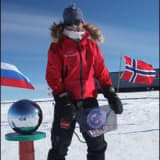
2010: World’s fastest solo crossing to the South Pole by Christian Eide
While wearing Brynje base layers, expeditionist Christian Eide completed a solo and unsupported trek to the South Pole in a record time of 24 days 1 hr 13 min.
-
2010

2010: Pål Anders Ullevålseter took 2nd place in Rally Dakar
Pål Anders Ullevålseter has competed in the Dakar Rally 11 times and was the first Norwegian to complete the race. His best result came in 2010 when he came in second, finishing just over an hour behind the winner. In this race he wore Brynje Super Thermo mesh next to the skin, and he has used the same garments for many years. He still uses Brynje actively.
-
2012

2012: Teodor Glomnes becomes the youngest person in the world to cross Antarctica
At the age of 20, adventurer Teodor Glomnes Johansen became the youngest person in the world to cross Antarctica. He swears by Brynje’s Super Thermo Mesh base layers.
-
2013

2013: Brynje launched its online store, www.brynje.no
The online store, www.brynje.no brings new opportunities for existing customers and expands Brynje’s market.
-
2014
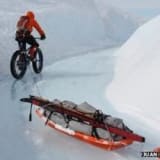
2014: Juan Menendez Granados cycles to the South Pole
Wearing Brynje base layers, adventure cyclist Juan Menendez Granados became the first person in the world to cycle solo and unsupported to the South Pole. (The year prior, he cycled across Greenland.)
-
2016

2016: Frode Lein completes 250 km race in Antarctica
Frode Lein, one of Norway's toughest ultra runners, was among the first four people in history to complete the "The Last Desert" race, covering 250 kilometres of the Antarctic continent. Brynje is proud to have Frode as a brand ambassador.
-
2018

2018: Frode Lein runs the Yukon Arctic Ultra - the world’s coldest ultra race
Frode Lein finished third in the Yukon Arctic Ultra. The Canadian race is described as the world's coldest and toughest ultra race, covering 483 kilometres and reaching extreme temperatures down to -54 degrees celsius. The 2018 race was the coldest one in its 15-year history. Frode Lein wore Brynje base, mid and shell layer clothing to stay warm and dry.
-
2019: Brynje’s Expedition Shell clothing collection is launched
Brynje launches a new collection of shell jackets, trousers and mittens. These robust technical outerwear products are intended for mountain and expedition use and were designed to provide protection in the most demanding conditions on the planet. The Expedition collection was well received by a wide range of customers and clients.
-
2020: The Norwegian Polar Institute chooses Brynje as their supplier of Shell clothing
Brynje of Norway was selected to supply shell clothing to employees of the Norwegian Polar Institute, who carry out scientific research in the polar regions and advise the Norwegian government.
-
2020
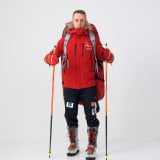
2020: Frode Lein completes the Iditarod Trail Invitational
Iditarod conjures up images of dog sledders crossing Alaska's wilderness in "The Toughest Race on Earth". As a participant in the Iditarod Trail Invitational, each contestant can choose between cycling, skiing - or for those who want to make it extra difficult for themselves - running in sneakers and snowshoes. Extreme runner and Brynje ambassador Frode Lein chose the latter option!
-
2020

2020: Thomas Lone becomes Norway's youngest person to ascend the Seven Summits
24-year-old Thomas Lone became Norway's youngest to complete The Seven Summits. Brynje is proud to have Thomas as a brand ambassador.
-
2020: Brynje become Eco-Lighthouse certified
Brynje becomes certified by Norway’s leading sustainability and social responsibility certifying body Eco-Lighthouse.
-
2020: Linn Therese Helgesen (15) completed all 377 Norwegian mountains over 2000 m
Linn Therese became Norway's youngest to climb all 377 Norwegian mountains of over 2000 metres altitude. With this, she set a historical record that will be difficult to beat.
-
2022: Brynje opened a store in Oslo
In 2022 we opened a new store in Kongens street no. 16 Oslo. We also have a store and outlet in the small town Larvik.
-
2022: Kristin Harila in the Himalayas
Kristin Harila set a world record for climbing all 14 of the world's 8000-meter mountains in one season. Her first attempt was in 2022, and she achieved her goal in 2023. Kristin used Brynje mesh and wool in the Himalayas.
-
2025: Hege Victoria Dypdalsbakk, fastest Norwegian woman to reach the South Pole
Hege Victoria became the fastest Norwegian woman to reach the South Pole. She wore Brynje Super Thermo mesh from head to toe next to her skin.

